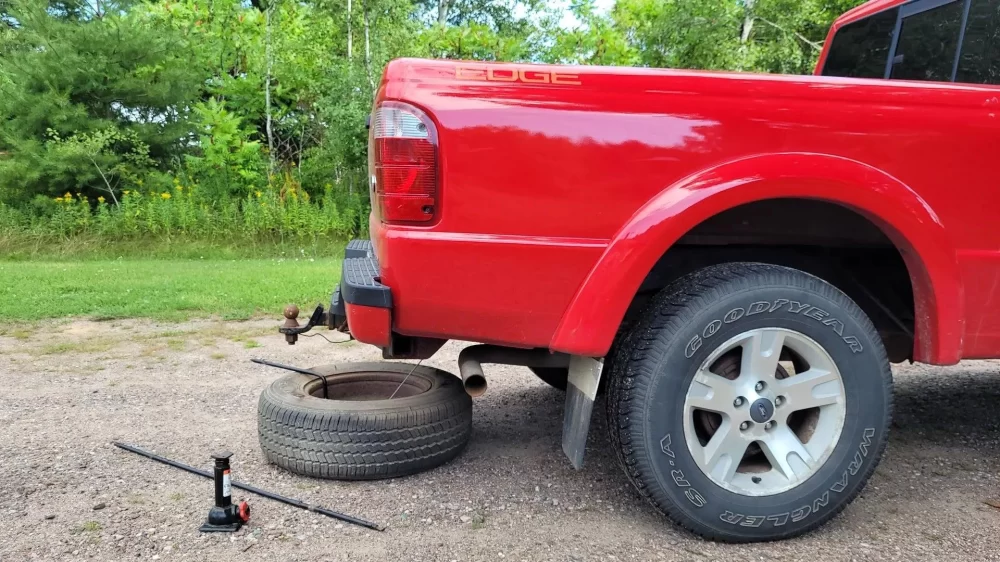- assessing-the-situation-on-a-steep-road
- essential-safety-steps-before-changing-the-tire
- how-to-secure-your-vehicle-on-a-hill
- step-by-step-guide-to-changing-a-tire-on-a-steep-road
- real-stories-lessons-from-steep-road-tire-changes
- when-to-call-professional-help-on-steep-roads
- pro-tips-for-preventing-tire-emergencies-on-steep-terrain
1. Assessing the Situation on a Steep Road
Finding yourself with a flat tire on a hill or mountain road is a challenge no driver wants to face. Knowing how to safely change a tire on a steep road starts with a careful assessment of your environment. Look for a flat area nearby, even if it means driving a short distance at a slow speed on the rim. If there is no safe spot, be extra cautious and focus on maximizing stability and visibility. Always remember that safety comes before speed, especially when gravity is against you.
Consider traffic patterns, weather, and road conditions. Nighttime, poor weather, or heavy traffic may increase risks and make waiting for help a wiser option. If you’re unsure, taking a moment to assess could save you from greater danger.

MR. TIRE INC.
2078 New York Ave, Huntington Station, NY 11746, USA
2. Essential Safety Steps Before Changing the Tire
Before attempting any tire change on a steep road, safety is your top priority. Start by turning on your hazard lights to alert approaching vehicles. Place reflective triangles or cones behind your car to increase your visibility, especially around curves or low-light areas.
Engage your parking brake fully and, if you have them, use wheel chocks or large rocks to block the wheels on the downhill side. Never rely solely on your car’s transmission to hold the vehicle on a slope. Check that the ground is as stable as possible—soft shoulders can make jacks slip or collapse, increasing danger.
Wearing a reflective vest and sturdy gloves can also provide extra protection. Preparation makes a real difference, turning a dangerous moment into a manageable challenge.

MR. TIRE INC.
2078 New York Ave, Huntington Station, NY 11746, USA
3. How to Secure Your Vehicle on a Hill
Changing a tire on a hill requires securing your vehicle against unwanted movement. Position your vehicle as straight as possible relative to the road. Always turn your wheels toward the curb or embankment—this way, if the car shifts, it will roll into the hill instead of the road.
Place chocks, bricks, or even logs both in front of and behind the wheels opposite the flat tire. For example, if your front-right tire is flat, chock both sides of the left rear wheel. Never place the jack on an unstable or sloped surface—look for a patch of ground that feels solid and level, even if it’s small.
If you feel unsure about the stability at any point, it’s safer to wait for professional roadside assistance. Companies recommended by Rescue & Towing are experienced in handling complex and risky tire changes, especially on steep terrain.
4. Step-by-Step Guide to Changing a Tire on a Steep Road
Once safety preparations are complete, follow a careful process. Loosen the lug nuts while the tire is still on the ground—this prevents the car from shifting on the jack. Place the jack in the manufacturer’s recommended location and lift the car only enough to remove the flat tire.
Replace the tire quickly but without rushing. Hand-tighten the lug nuts, lower the vehicle, and then finish tightening them in a star pattern for even pressure. Double-check all nuts and remove chocks only when you’re certain the car is stable and the road is clear.
Changing a tire on a hill demands patience and precision. If at any moment you feel unsafe, don’t risk it—contact a professional through Rescue & Towing for prompt, expert help.
5. Real Stories & Lessons from Steep Road Tire Changes
Real-life experiences highlight the risks and best practices for safe tire changes on steep roads. One driver in California’s Sierra Nevada mountains shared online how he narrowly avoided disaster: his jack started to tip, but he had used large rocks as chocks and wore a reflective vest, so he was visible and the car stayed put. The story became a favorite on driving forums and showed how simple safety gear can make all the difference.
On the other hand, a viral social media post recounted a failed attempt to change a tire on a steep city street, where the car slid off the jack and into traffic—fortunately, no one was hurt, but the lesson was clear: when in doubt, call for expert roadside assistance. Stories like these reinforce the importance of preparation, patience, and the willingness to ask for help.
6. When to Call Professional Help on Steep Roads
There’s no shame in deciding the situation is too risky to handle alone. Steep terrain, bad weather, or heavy traffic are all good reasons to call for emergency tire change assistance. Rescue & Towing partners with professionals who have the equipment and experience to manage tire changes on difficult inclines, minimizing danger for you and your vehicle.
Professionals can secure the area, use heavy-duty equipment, and often finish the job much faster than a solo driver. Your safety—and that of everyone on the road—should always come first.
7. Pro Tips for Preventing Tire Emergencies on Steep Terrain
The best way to handle a flat tire on a hill is to avoid one in the first place. Before heading into hilly or mountainous areas, check your tires for tread wear, punctures, and proper inflation. Carry a tire repair kit, reflective gear, and sturdy wheel chocks as part of your emergency kit.
Know your route, and plan fuel and rest stops before tackling remote or steep stretches. With a little preparation and awareness, you can dramatically reduce the risk of finding yourself stuck on a dangerous slope.
And if trouble ever does strike, remember that Rescue & Towing connects you to trustworthy, fast-responding roadside professionals who can help with even the most challenging situations. It’s always smart to have their contact details ready before you set out on steep terrain.






























